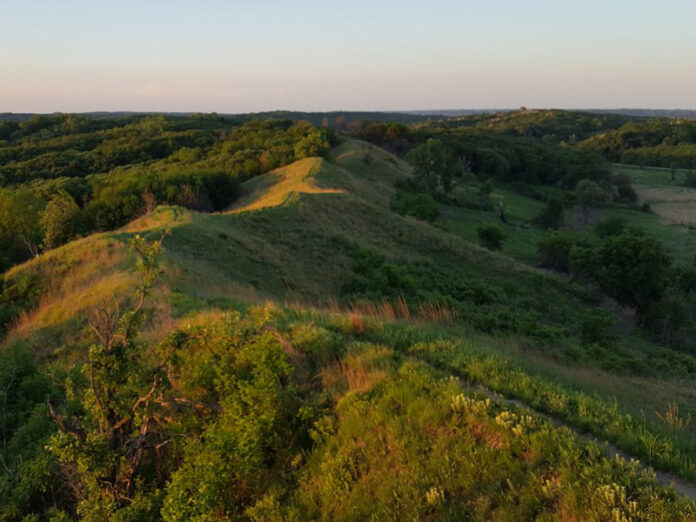In the heart of Pottawattamie County, Iowa, a hidden gem, the Green Hill Wildlife Management Area, has become the battleground for a remarkable environmental revival. Tucked away in the Loess Hills, just a stone’s throw from Council Bluffs, this landscape recently played host to a dedicated team of eco-warriors led by the nonprofit powerhouse, Golden Hills Resource, Conservation & Development, headquartered in Oakland, Iowa. Their mission? To embark on a thrilling seed-gathering adventure, aiming to resurrect a piece of Iowa’s lost paradise.
Lance Brisbois, the Deputy Director of Golden Hills, gazes across the rolling terrain, his eyes drawn to patches of golden hues in the distance. These, he tells us, are remnants of a time when prairies ruled the land. Iowa, once lush with native prairies, has seen them vanish, plowed under the relentless march of agriculture and the concrete sprawl of urban development. What’s left are these isolated remnants – a glimpse into a forgotten world.
The Loess Hills, the setting for this epic ecological saga, boast a treasure trove of remnant prairies, among the last of their kind in the Hawkeye State. These are not just plots of land; they are living remnants of Iowa’s history and natural legacy, precious and irreplaceable.
This grand endeavor is all about restoring the native prairie to Green Hill, a sanctuary within the Loess Hills. Armed with nothing more than their hands and an ardent desire to make a difference, volunteers took to the fields to collect seeds. They learned to spot ripe seeds, identified various species, and, importantly, distinguished the natives from the invaders. The goal? To nurture the growth of native prairie plants, bringing them back from the brink of extinction.
The Loess Hills, once open and endless, now wear a cloak of trees and non-native pasture grasses. These hills once thrived on the regular renewal of prairie fires, and nature’s harmony has been disrupted. But the flame of hope burns bright in the hearts of those who care.
Prairies are more than just seas of grass. They’re intricate ecosystems, vibrant with life and color, where 200 or more species coexist. This restoration effort isn’t just about reclaiming the land; it’s about reviving biodiversity, breathing life back into wildlife habitats long forgotten.
And what of the seeds collected during this grand endeavor? They will find a new home within the Iowa Department of Natural Resources. These seeds are not just tokens; they are the very essence of a lost world, the key to unlocking a future where non-native grasses yield to the natives.
In this extraordinary journey, Iowa is reclaiming its natural heritage, one seed at a time. This restoration project is more than a noble cause; it’s a rekindling of a primordial bond between land and people, a chapter in the story of how nature’s treasures can be saved from the edge of oblivion. It’s the epic tale of bringing the Loess Hills back to life – a story that’s still unfolding, filled with promise, passion, and the magic of nature’s resilience.



